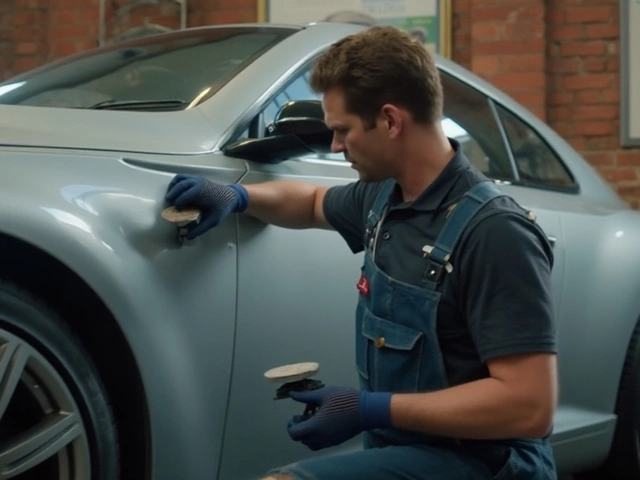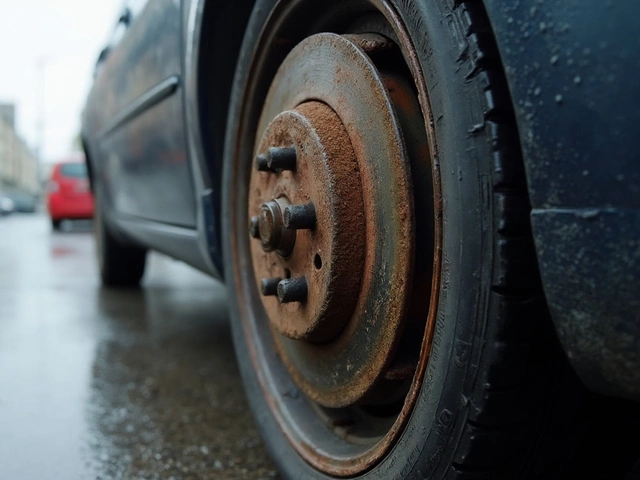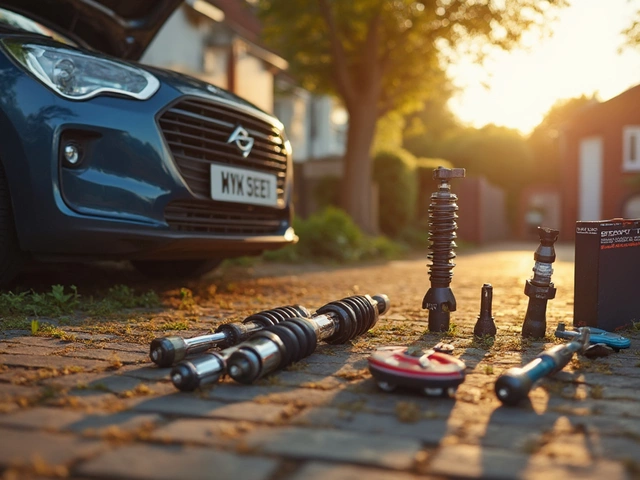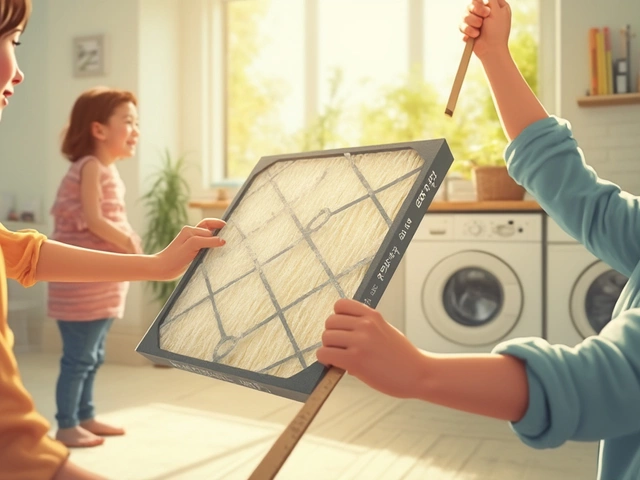So, you've been putting off changing your brake pads, huh? Maybe you're thinking, 'I'll get to it next weekend.' But here's the thing: waiting too long could be more than just a minor annoyance. It might cost you more than a few bucks - it could compromise your safety.
Let me break it down. Brake pads are these hard-working guys that form a crucial part of your braking system. They press against the rotors to slow down your car. If they're worn out, you're looking at longer stopping distances. In worst-case scenarios, they might fail, and let's face it, no one wants to imagine their brakes giving out on a busy highway!
You might be wondering how often should you check these? Well, experts say every 10,000 miles or so, which is about twice the distance you'd drive from Maine to California. But, it's not just miles that matter; how you drive plays a big role too. Frequent stop-and-go traffic? Towing a trailer? That's more wear and tear on those pads.
- The Role of Brake Pads
- Signs Your Brake Pads Need Changing
- Consequences of Delayed Changes
- Tips for Brake Pad Maintenance
- How to Choose the Right Brake Pads
The Role of Brake Pads
If you think about it, brake pads might just be the unsung heroes of your car. Their job is pretty straightforward, yet super important. When you hit the brake pedal, these pads press against the brake rotor, creating the friction needed to slow down or stop your vehicle. Imagine trying to stop a speeding train – it's not exactly easy – but these small components make it possible for your car, no matter its size or speed.
Now, you might be curious about why they're necessary. Here's the deal: without properly working brake pads, your car's stopping power could be seriously compromised. This isn't just about wear and tear – it's about safety. Consider how crucial it is to be able to stop efficiently when a kid runs onto the road or the car in front suddenly brakes.
One cool thing is how they've evolved over time. Back in the day, pads contained asbestos. Nowadays, most use organic, semi-metallic, or ceramic materials to enhance safety and performance. These materials not only improve lifespan but also reduce noise, a win-win if you ask me!
Depending on what kind of driving you do, you might favor one type over another. For city driving with lots of stopping, organic pads might be a good choice. For something more performance-based, say if you're a fan of speed or heavy loading, ceramic or semi-metallic might be more up your alley.
| Type of Brake Pad | Best Used For |
|---|---|
| Organic | City driving |
| Semi-metallic | High performance |
| Ceramic | All-around use |
Ultimately, the act of braking shouldn't be dramatic, but if there's one thing you want to work without a hitch, it's this part of your car. Without brake pads doing their job efficiently, well, let's just say you'd better hope you have a very long and empty road ahead!
Signs Your Brake Pads Need Changing
Alright, so how do you know when it's time to swap out those brake pads? Let's get into it. It's not like they come with a flashing red warning sign, but you can still catch the cues if you pay attention.
First up, listen to your car. A sure-fire sign is the telltale squeaking or squealing noise. Brake pads come with a little metal indicator called a wear indicator. When the pads get too thin, this metal rubs against the rotor, creating that annoying sound you can't ignore. It's your car's way of saying, 'Hey, time for a change!'
Next, there's the grinding noise. If you hear this, it's time to act fast. It usually means the brake pads are completely worn out and the metal of the calipers is grinding into the rotors. Not only is this dangerous, but it also leads to expensive repairs.
Do you feel vibrations when you press the brake pedal? That could also indicate worn-out brake pads or even a warped rotor. Don't brush it off. It’s trying to tell you something important.
Have you noticed that your car takes longer to stop than it used to? That could mean the brake pads are thinning and aren't as effective. Time to check them out.
And here's something from the experts. Car maintenance guru Mike Allen once said, "Brakes are the most important safety feature on your car. So it's vital to keep them in top shape at all times."
Brakes are the most important safety feature on your car. So it's vital to keep them in top shape at all times.
Lastly, keep an eye on the dashboard. Certain cars have a brake warning light that alerts you to potential issues with the brake system. Don't ignore it if it lights up.
- Squeaking or squealing sounds
- Grinding noises
- Vibrations in the brake pedal
- Increased stopping distances
- Brake warning light on the dashboard
Catching these signs early can help avoid big problems down the road. Don't gamble with your safety or your wallet—stay on top of these crucial car maintenance tasks.

Consequences of Delayed Changes
Alright, skipping brake pad replacements might seem like a short-term money saver, but it could lead to some nasty surprises down the road. Here's what might happen if you wait too long.
Brake pads are your first line of defense against dangerous stopping situations. When they wear thin, they start to scrape against the rotors, which leads to costly repairs or replacements. Imagine going from a modest bill for new pads to potentially hundreds of dollars to fix or replace rotors!
Those worn-out pads also mean increased stopping distances. In simple terms, you'll need more time to stop your car. This can be a big deal when you're driving in heavy traffic or in sudden stop scenarios. Think about those split-second moments where every inch matters.
Also, leaving brake pads unchecked can lead to total brake failure. Yeah, that’s as scary as it sounds. It's like walking a tightrope without a safety net – not the best idea.
On top of that, irregular wear might lead to uneven tire wear. This affects your car’s handling and can make it wobble or pull to one side. That’s not just uncomfortable, it’s unsafe too.
Tips for Brake Pad Maintenance
Taking care of your brake pads isn’t rocket science, but it does make a huge difference in keeping your ride smooth and safe. Here's what you can do to keep things in tip-top shape without breaking the bank.
First off, make a habit of checking your brake pads regularly. No need for fancy equipment—you can often peek through the wheels to eye the thickness of the pads. If they look thinner than a quarter of an inch, it’s time to swap them out.
Listen closely while driving. Any high-pitched squeals? That’s the built-in wear indicator telling you it's about time for a change. Ignoring it could cause you trouble down the road.
- Avoid hard and sudden braking whenever possible. It’s not just about safety; it’ll keep pad wear in check too. Gentle braking is a win-win for both you and your car.
- Keep an eye on your brake fluid. Old or low fluid can mess with brake performance. Check it every time you do an oil change. Quick tip: dark fluid means it’s time for a swap.
- Don’t forget to rotate your tires and get regular alignments. It might seem unrelated, but uneven tire wear can make your brakes work harder on one side.
Seriously considering DIY for replacing them? It's not that hard if you're handy with tools. Just make sure to have a good manual or tutorial handy. Otherwise, finding a trustworthy mechanic isn't a bad move either.
Still hesitant on how often to do these checks? Well, in a survey, about 27% of drivers admitted they couldn’t remember the last time they even checked their brakes. Don’t be part of that group! A regular schedule beats an unexpected mechanic bill any day.
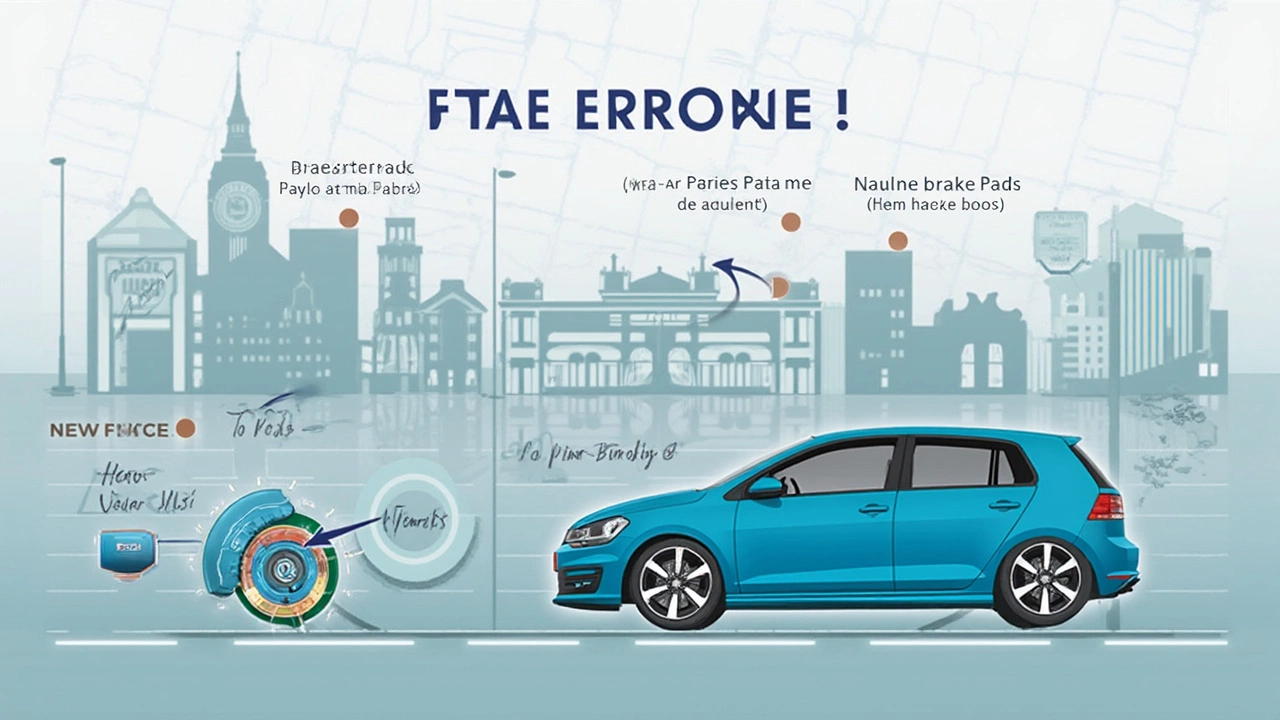
How to Choose the Right Brake Pads
Picking the right brake pads isn't just about snagging the first pair off the shelf. You gotta consider your car type, your driving habits, and what you want from your brakes. Here's how you can make the best choice for your ride.
First, think about the material. Brake pads come mainly in three types: organic, semi-metallic, and ceramic. Organic pads are softer and quieter but wear out faster. They're good if you're mostly doing city driving. Semi-metallic pads mix durability and performance—great for more aggressive driving but can be a bit noisy. Ceramic pads stay quiet and last long but can be pricier.
- Organic Pads: Ideal for daily commuters in the city.
- Semi-Metallic Pads: Excellent for performance-focused drivers and occasional track days.
- Ceramic Pads: Perfect if you want quiet braking and longevity, and don't mind paying extra.
Consider your vehicle. Is it a compact car, an SUV, or a heavy-duty truck? Larger vehicles demand more from their braking systems, so you might opt for something sturdier like semi-metallic or ceramic.
And don't forget about your driving style. Stop-and-go traffic wears down pads fast. If you have a lead foot, you'll want performance pads even if they're a bit more expensive upfront, as they'll save money on more frequent replacements.
Check the pad ratings too. Some brands provide friction ratings, often labeled as "FF," "GG," etc. Higher letters usually mean better performance, particularly if you’re pushing your ride harder or driving in rougher terrains.
Finally, budget matters. The best brake pads don't need to be the most costly, but avoid cutting corners if it means skimping on quality. It's your safety, after all!
So there you go. Making the right choice isn't about luck—it's about being informed and picking what's best suited for how you and your chariot roll.


